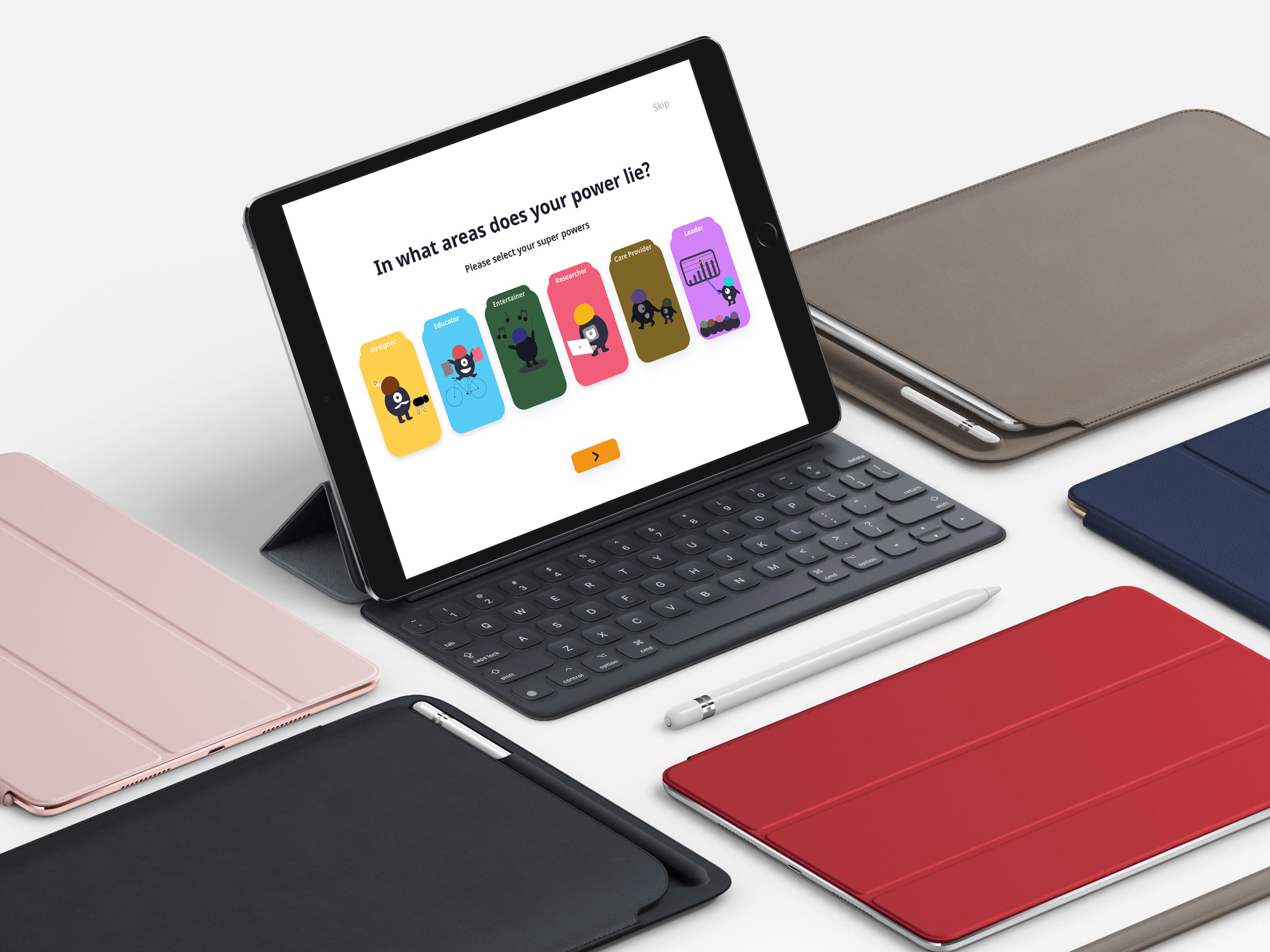CUE
Cue is a companion application system that aims to help people living with Alzheimer’s in accomplishing their daily routines, while relieving stress from care providers. Through our real-time monitoring platform, we aim to maximize quality of life by facilitating effective care.
Project Overview
Type: Mobile & tabloid application
Duration: 4 months
Role: UX Research and UX Design
Team: Lisa Eunhye Yi (Design Lead, UX/UI Design), Parmis (Visual Design)
Tools: Figma, Adobe (XD, Illustrator, Photoshop, Premiere Pro), Miro
Recognition:
2020 DesignTO: Best in Festival - Design for Health, Wellness, Aging & Inclusion
Showcased at 2020 DesignTO & 2020 Legislative Assembly Showcase
Challenge 🧠
With an uprising dementia demographic around the world, more care providers will be demanded for these individuals who lack the ability to care for themselves. Most of the time, it is the affected person's family or close friend who takes care of them. But even with the closest one, conflicts can still arise due to challenges with constructive communication and mutual understanding.
Collaborative project with Baycrest Hospital
Over the course of 4 months, we had the opportunity to co-work with Baycrest Hospital to develop an innovative assitive product that helps ease the lives of dementia clients, their families, and their caregivers. Each solution reflecting the individual abilities, needs and wants of clients and/or care providers at Samuel Lunefeld Mountainview Club, Baycrest Health Sciences.
The Product
Our team developed an app with both a client interface and a companion interface for the caregiver. The caregiver interface allows them to set a certain task via the app and push a notification as a cue helping the client to achieve the task. This is especially useful when the caregiver is not next to the client. The app is also accessible to other family members and they will be able to track the client’s condition at any given time throughout the day.
On the other hand, the client’s app is designed with a simple, distinguishable, and non-irritating interface that is easy to operate, increasing the perceivability of information for older generations. Thus, it is achieved through features such as icons and bright contrasting colours.
Research
Through conducting a multi-methodology research, we aim to better understand how it looks to be living with dementia, how they wish to improve their quality of life, their daily routine, and how academic researchers have sought to explore these questions in their relative fields of study.
Research methodology used:
- Observational Research
- Literature Review
- Market Research
- Subject Matter Expertise Feedback

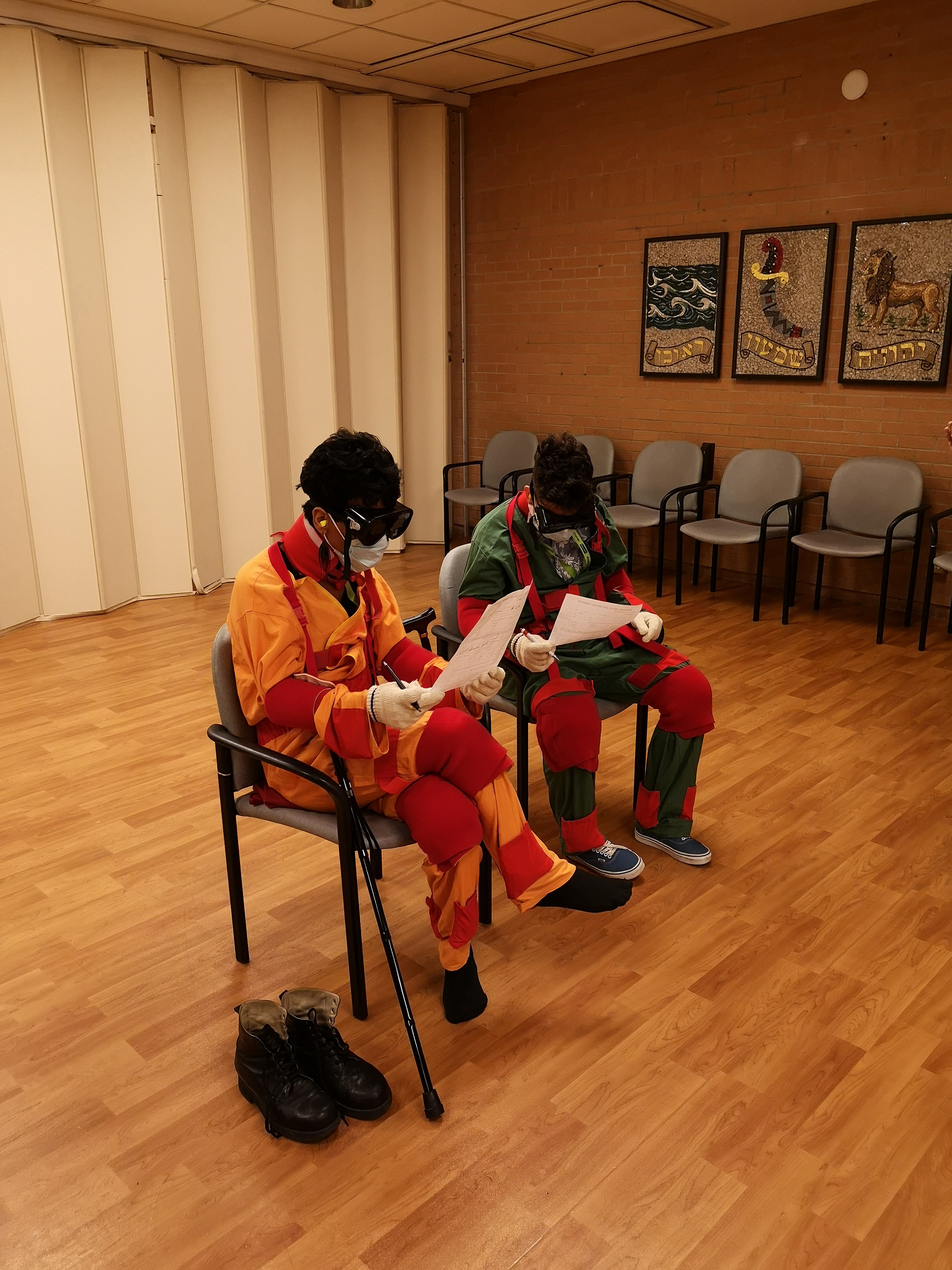

Observational Research 👁
When it's time for a task, individuals who appeared more conscious will walk towards the designated area for the task after being prompted. But those who have mobility impairment or looking lost will be guided by caregivers instead. There are also scenarios where the person refuses to proceed with the activity due to other thoughts lingering in their minds, requiring caregivers to convince them or let them have their personal time.
This made us wonder if the scenario is common to be seen within the household of someone who has dementia.
Narrowing Scope 🔎
Early-Onset Alzheimers (Stage 1 to 5)
Alzheimer's disease has a progressive nature, where its symptoms such as memory loss and behaviour changes gradually worsens by each stage.
Early Onset Alzheimer Patients often experience difficulties following multiple step instructions, leading to an increasing sense of frustration. They tend to lose their train of thought more often, which made achieving daily routines and tasks more difficult as well.
Not only is it frustrating for the person with dementia, Families and caregivers also feels overwhelmed when they try to balance between providing effective care and managing their own lives.
Insights
User Persona
User Journey


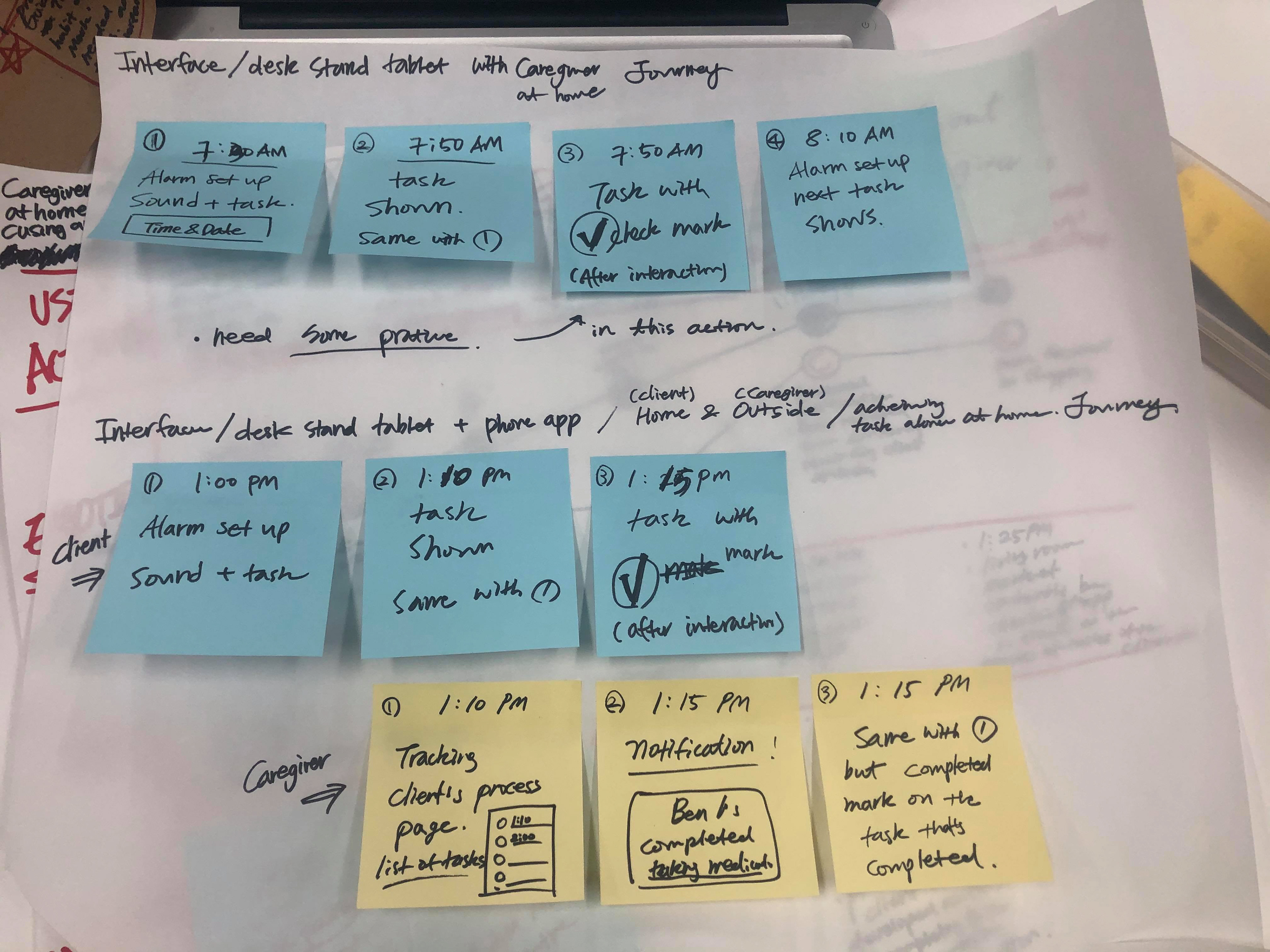
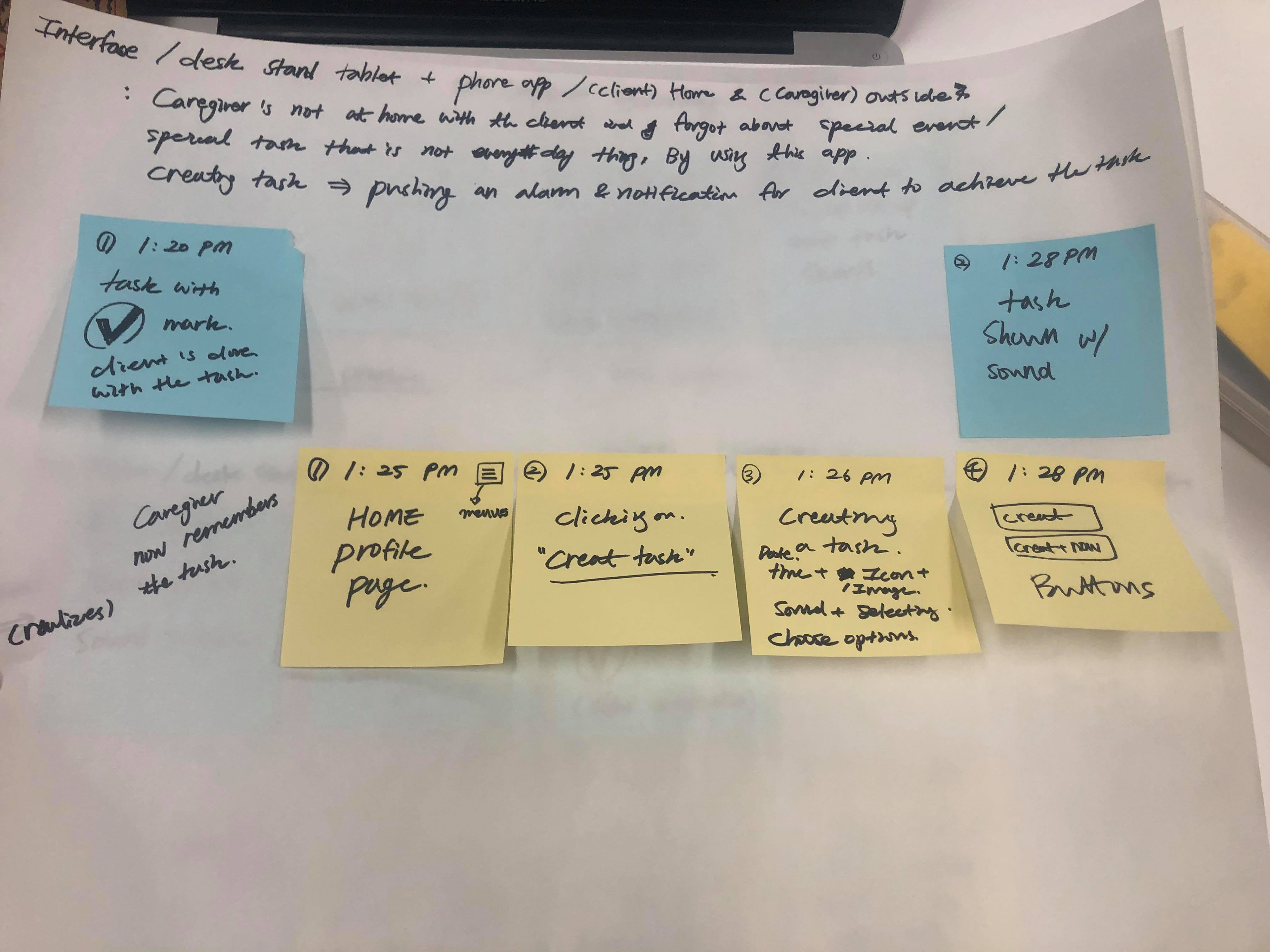
Iterations
Most products being served in the community are developed to postpone the disease's progression. Among them, we find that practicing routines is very beneficial to people living with dementia and help them in building good habits.
Our initial concept was a physical product, where we imagined scenarios for the person living with dementia to use on their own. But our concept changed its form after receiving feedbacks from several subject matter experts. Taking in various suggestions, it slowly guided our project towards our cueing platform.
Perceptual Mapping
We learned that apps like (Lumosity and Dementia Emergency) provides brain stimulating exercise for clients to train their mind, while (Cognicare, Babylon, Mindmate, and Dementia Talk App) provides guidance for caregivers to improve their caregiving. (Puple alert) is quite a unique app out of all, it requires community effort to help find a person with dementia who's lost on the street.
Establishing Perspectives
We explored a variety of aesthetics and feelings we wish to incorporate in our application, we also utilized social networks to seek guidance from public in order to select our product's optimal style.
Initial High Fidelity Wireframe
Solution
The companion system between the caregiver and the client’s app was not seen in any systems made in the marketplace. The app is accessible to other family members and they will be able to track the client’s condition at any given time throughout the day.
Our design is unique as we have adapted the use of icons in the process of cueing, providing visual cues that gives clients a better understanding method. Our system allows real-time monitoring, allowing caregivers to track and add tasks even when they’re not physically with the client.
Interface

Caregiver's Interface
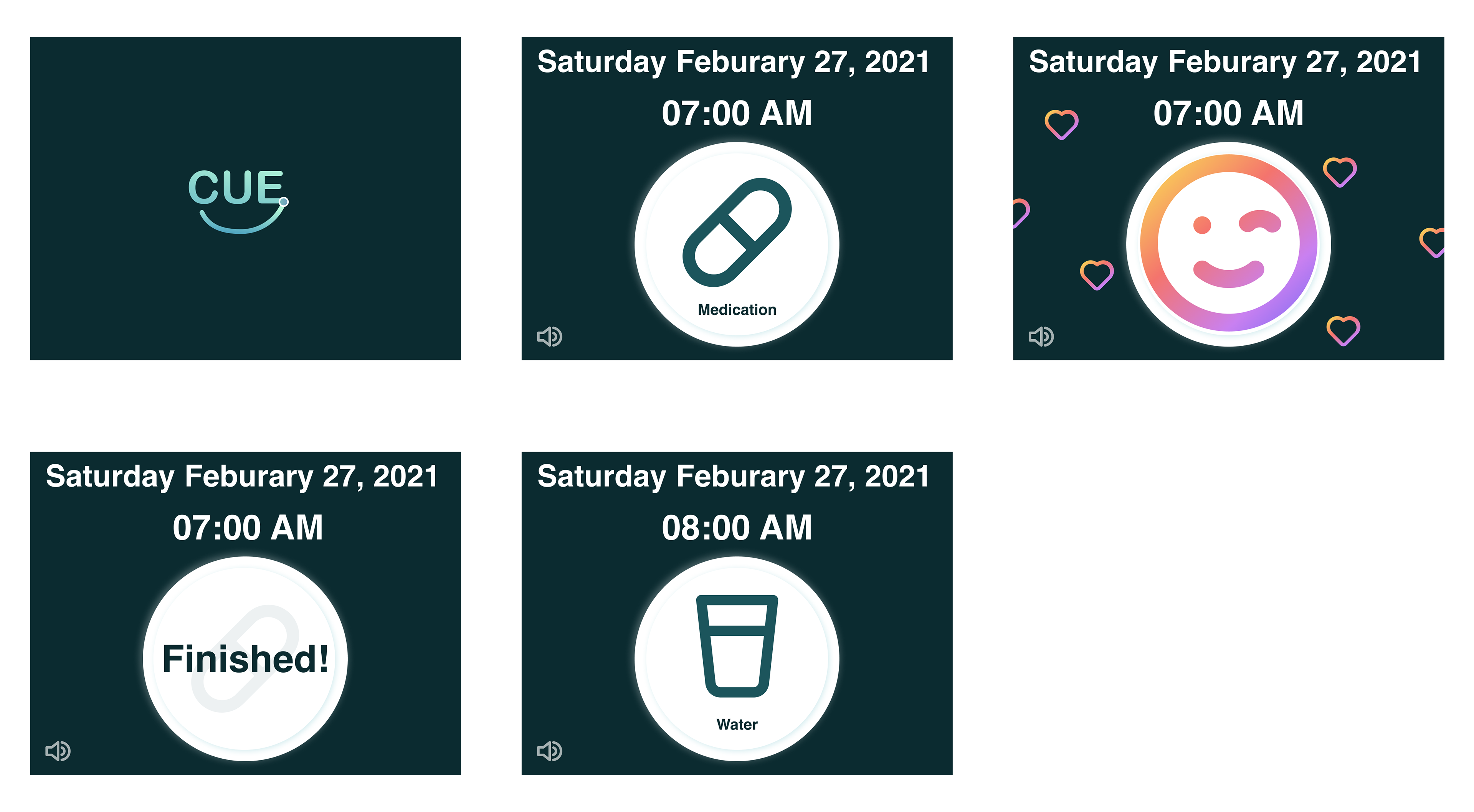
Client's Interface
Challenges
This was the first time I took on a semester long project along with a team, as well as my first time engaging in creating a digital product. It was the most difficult to learn on the way while we design the product, especially when we have minimal experience in UX/UI design. One of the things I learned from this project is to believe in ourselves and have perseverance in ambiguity, we may not have the best experience or knowledge to help us identify all the needs of our clients, but we have to believe that the design direction we chose to do was the best result of the researches & user testing we have done at that time.
Key Takeaways
The most valuable experience I learned from this project is to persevere in ambiguity, we may not have the best experience or knowledge to help us identify all the needs of our clients, but we have to believe that the design direction we chose to do was the best result of the researches & user testing we have done at that time.

